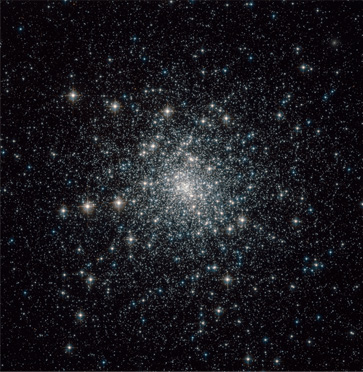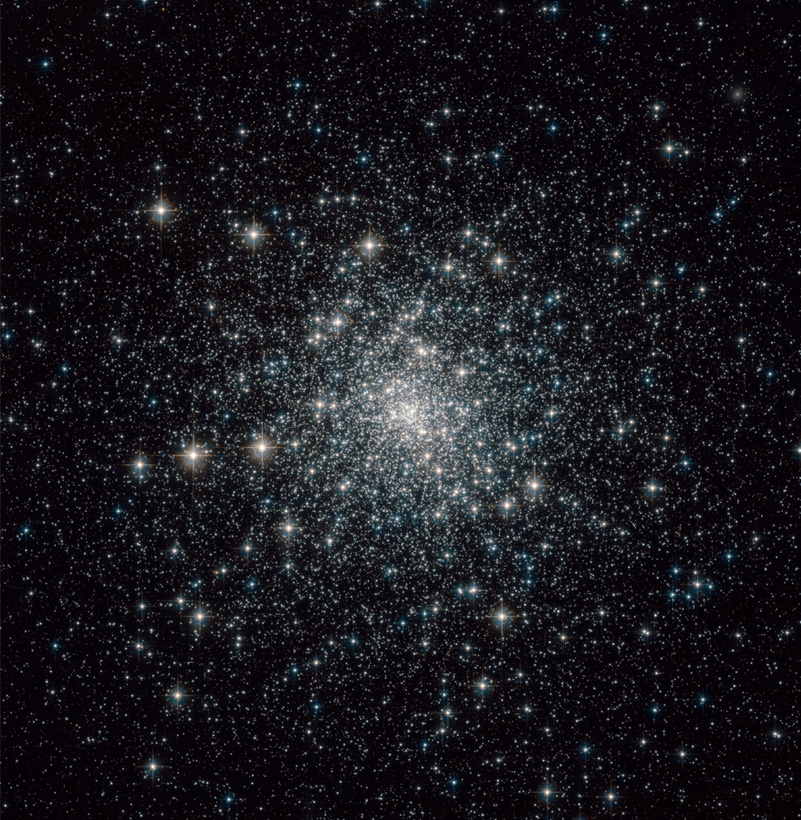Globular Clusters
Within galaxies like our Milky Way there are star clusters that may have the appearance of galaxies. Some are classified as open clusters like The Pleiades but others which are more dense and tend to form in roughly spherical shapes are called globular clusters. Since the stars in a globular cluster are presumed to have been created at about the same time by reason of their proximity, such clusters aid the study of star fomation. Globular clusters contain hundreds of thousands, and sometimes millions of stars. Most globular clusters in our galaxy show a lack of O and B type stars, an indication of their great age. |  M30 M30 |
The globular clusters in the Milky Way are all estimated to be at least 10 billion years old and therefore contain some of the oldest stars in the galaxy. They contain an abundance of low-mass red stars and intermediate-mass yellow stars, but none greater than 0.8 solar masses. There are about 150 known globular clusters in the Milky Way. It is thought that globular clusters formed very early in the vast halo surrounding the nascent galaxy before it flattened to form the spiral disc. Star formation would have stopped in these clusters maybe 13 billion years ago, so only old stars are expected to be found there.
While the globular clusters in the Milky Way are very old, the globular cluster NGC 1818 in the Large Magellanic Cloud seems to be very young.
| Varieties of galaxies |
Galaxy concepts
Reference
Chaisson & McMillan
Ch. 17
| HyperPhysics***** Astrophysics | R Nave |
